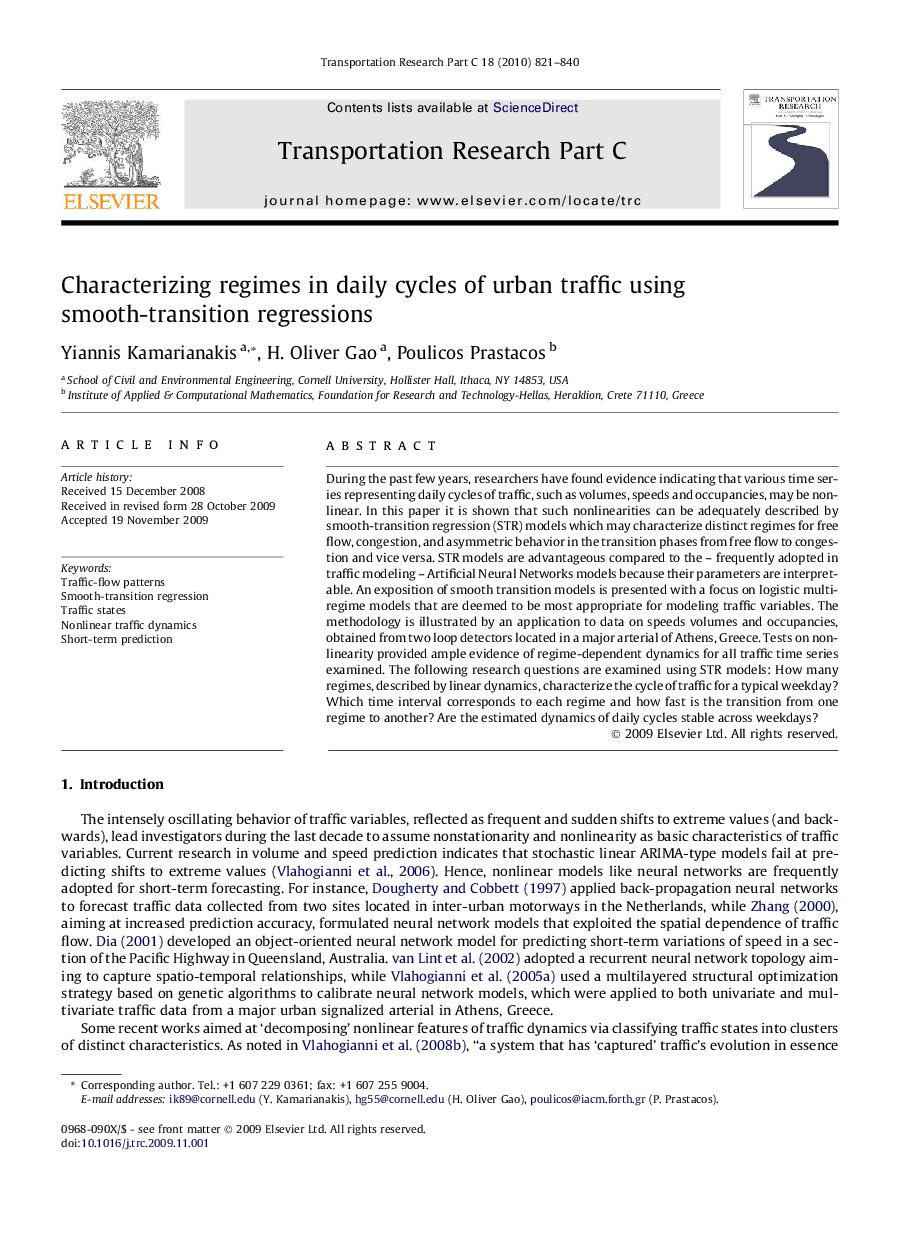| Article ID | Journal | Published Year | Pages | File Type |
|---|---|---|---|---|
| 525206 | Transportation Research Part C: Emerging Technologies | 2010 | 20 Pages |
During the past few years, researchers have found evidence indicating that various time series representing daily cycles of traffic, such as volumes, speeds and occupancies, may be nonlinear. In this paper it is shown that such nonlinearities can be adequately described by smooth-transition regression (STR) models which may characterize distinct regimes for free flow, congestion, and asymmetric behavior in the transition phases from free flow to congestion and vice versa. STR models are advantageous compared to the – frequently adopted in traffic modeling – Artificial Neural Networks models because their parameters are interpretable. An exposition of smooth transition models is presented with a focus on logistic multi-regime models that are deemed to be most appropriate for modeling traffic variables. The methodology is illustrated by an application to data on speeds volumes and occupancies, obtained from two loop detectors located in a major arterial of Athens, Greece. Tests on nonlinearity provided ample evidence of regime-dependent dynamics for all traffic time series examined. The following research questions are examined using STR models: How many regimes, described by linear dynamics, characterize the cycle of traffic for a typical weekday? Which time interval corresponds to each regime and how fast is the transition from one regime to another? Are the estimated dynamics of daily cycles stable across weekdays?
